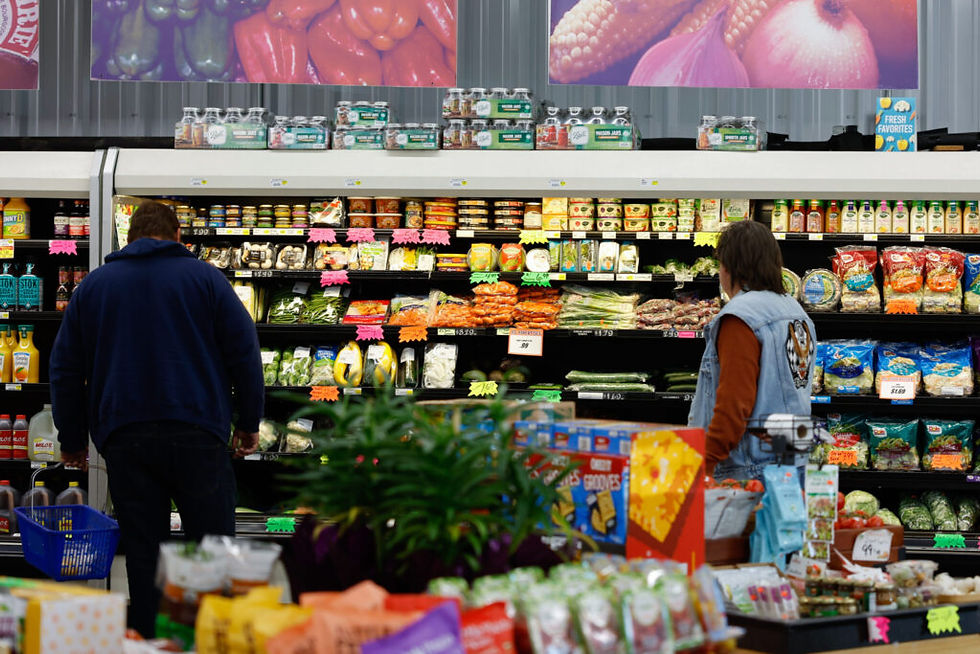How to Bridge the Hunger Divide for America’s Seniors
- Sheila Christopher

- Sep 9, 2023
- 3 min read
Sheila Christopher, Marcos Gaucin and Susan Goodell

Access to nutritious food has always been a challenge for elderly individuals with low incomes, no matter where they live. Just three years ago, we were all confronted with how to serve our neighbors in the face of pandemic-era lockdowns that kept everyone but essential workers home, ratcheted up demand for charitable food, and forced us to quickly pivot decades-old ways of keeping our communities fed.
While it was a period of uncertainty for everyone, life for too many senior citizens became especially complex. Mobility and transportation challenges were magnified for those without family or loved ones nearby. Amid the despair, there were also uplifting moments. Elected officials, nonprofit organizations and the private sector linked arms in many places to help people in need.
For example, many of us began delivering food directly to the homes of seniors without forcing them to make a choice that could jeopardize their health or lives. We were grateful that pandemic-era aid from governments, foundations, donors and companies helped us stand up and scale these delivery programs.
Home delivery can bridge hunger, health, convenience and modern technology. Not only did home delivery reduce senior citizens’ exposure to COVID-19, it helped many who struggled to carry the food boxes, which often weigh as much as 35 pounds, and reduced stigma so seniors could feel comfortable asking for help.
By any demonstrable measure, home delivery for the Commodity Supplemental Food Program (CSFP), a federal nutrition program that provides monthly food boxes to elderly individuals with low income, has been a success for organizations who were already leveraging delivery as well as those that rolled out options as a response to COVID-19.
However, these food boxes are only as useful as seniors’ ability to access them. States that invested in food bank delivery programs have seen significant increases in their CSFP participation rates.
While pandemic-related financial aid spurred innovation, we need continued support to prevent pandemic-era access gains from rolling back for the more than 5 million older Americans who faced food insecurity in 2020. Further help via CSFP is one way that policymakers can make these gains permanent.
Even as pandemic-era programs wind down, senior hunger remains a pressing issue. According to the USDA, more than 100,000 eligible seniors did not participate in CSFP last year. The concerning trend is exacerbated by lack of transportation and physical ailments that make it hard for seniors to travel or lift heavy items.
Thankfully, members of Congress are acting. A bipartisan bill introduced in the House of Representatives by Reps. Marc Molinaro (R-N.Y.) and Jasmine Crockett (D-Texas) would authorize a three-year pilot program to support ongoing and new home delivery of CSFP boxes. The Delivering for Rural Seniors Act would provide grant funding to food banks and other local organizations to be used for home delivery efforts. The pilot program provides flexibility for organizations to establish their own delivery programs, work with partners to leverage delivery services or create other innovative models to best serve their communities. Funds will be prioritized to rural areas where food distribution sites are sparse, and seniors face even greater access challenges due to the distances they must travel.
Even conservative estimates have pegged the cost of hunger in America at $160 billion, a challenge poised to worsen with the ongoing escalation of food costs. After a nearly 10% spike last year, food prices are expected to rise another 7% in 2023, according to the Department of Agriculture. Lack of access doesn’t only contribute to the cost of hunger, it also contributes to higher health care costs for patients and the states that underwrite health care systems as well.
Households with budgets that are already stretched thin are once again bearing the burden. Seniors, who overwhelmingly rely on a fixed monthly income, are getting squeezed. Our food distribution networks are seeing an increase in demand, but we need a corresponding increase in support to get food to seniors.
When COVID-19 first arrived on our shores, our country linked arms to help those most in need. Three years on, areas of bipartisan agreement are few and far between in Congress, but providing food for our vulnerable seniors can and must be the exception. The Delivering for Rural Seniors Act is a positive step. We urge Congress to pass this bill and deliver for seniors.
Sheila Christopher is the executive director of Hunger-Free Pennsylvania.
Marcos Gaucin is the chief programs officer of the Phoenix-based St. Mary’s Food Bank.
Susan Goodell is the CEO of El Pasoans Fighting Hunger Food Bank.
Read More
U.S. kids face a ‘hunger cliff’ as pandemic aid programs end
Child hunger is once again on the rise. Here’s what programs experts say work.
Stop & Shop Charged Higher Prices in a Low-Income Neighborhood Than an Affluent One
Income Level and Race Play Role in Food Allergy Risks: Study
How inflation became America’s greatest economic problem
How To Fix Our Exhausted Soil That’s Leading To Worse Food Quality





Comments